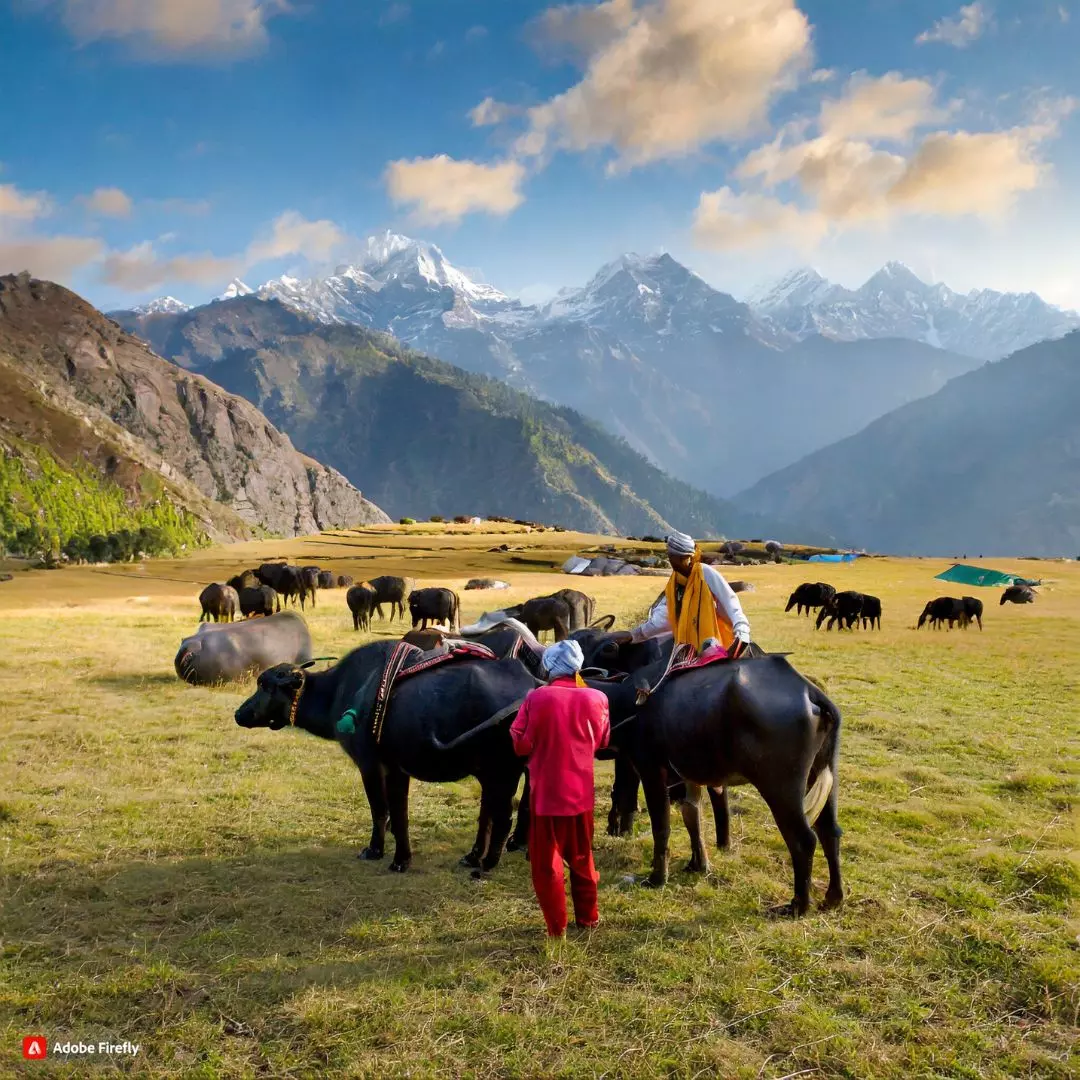In the heart of the Himalayan foothills resides the Van Gujjar community, custodians of a nomadic heritage that seamlessly intertwines with the surrounding environment. Their age-old practice of seasonal migration, a symphony of cultural richness and ecological balance, faces legal challenges that echo through the tranquil landscapes they call home. This exploration delves into the profound connection between the Van Gujjar community and their natural surroundings, the legal complexities they grapple with, and the imperative to preserve this delicate dance between humanity and nature.
The Van Gujjars, spread across Uttarakhand, Himachal Pradesh, and Jammu and Kashmir, embody a cultural legacy that mirrors the ebb and flow of the seasons. In winter, they find solace amidst the dry deciduous forests of the Shivalik hills, and as summer unfurls its warmth, their migration begins. Ascending to mountain pastures at elevations ranging from 8,000 to 12,000 feet, the Van Gujjars engage in a transhumance crucial for the sustenance of their domesticated buffaloes and the ecological well-being of the region.
Their nomadic journey is not merely a seasonal migration; it is a harmonious ballet with nature. The Van Gujjars’ presence in the high-altitude meadows during the Char Dham Yatra not only provides sustenance to their community but also allows for the rejuvenation of forests in the plains—an ecological contribution that remains deeply embedded in their way of life.
Beyond their ecological role, the Van Gujjars foster a strong sense of community. Their socio-economic fabric, less stratified compared to other pastoral communities, is a testament to their shared reliance on the environment for sustenance. Kinship ties remain robust, with a shared commitment to preserving their nomadic heritage. This unity, forged through generations, amplifies their resilience in the face of modern challenges.
Nomadic Members & Complexities
In comparison to other communities, the Van Gujjars’ journey is not just a migration; it is a communal effort, emphasizing the interdependence of its members and the environment. Their Islamic tradition, deeply entwined with their nomadic practices, further emphasizes a collective ethos that transcends individual pursuits.
However, the Van Gujjars find themselves entangled in legal complexities that pose a threat to their age-old traditions. Annual permits, mandated by the Uttarakhand environment and forests department, create a bureaucratic hurdle that jeopardizes the delicate balance they maintain with the environment.
The Forest Rights Act of 2006, if fully implemented, holds the promise of a more sustainable future. It recognizes the ecological role of indigenous communities, ensuring their access to grazing pastures and seasonal landscapes. Such legal provisions not only safeguard the nomadic lifestyle of the Van Gujjars but also reinforce their role as custodians of the environment.
Recent legal victories, notably the High Court order affirming the right of Van Gujjars to migrate within the Govind Pashu Vihar National Park, stand as beacons of hope. The court’s invocation of Article 21 (Protection of Life and Personal Liberty) underscores the constitutional protection of their traditional practices and ecological stewardship.
As environmental advocates, the Van Gujjars, through their nomadic lifestyle, serve as guardians of the natural world. Their legal triumphs not only defend their way of life but also advocate for the protection of the environments they traverse.
The Van Gujjars stand at the crossroads of tradition and legality, holding in their hands not just a way of life but the delicate balance of the ecosystems they traverse. While legal challenges persist, the imperative to recognize and preserve their nomadic pastoralism goes beyond bureaucratic hurdles—it is a call to nurture the bond between community and environment. In appreciating the cultural significance of the Van Gujjars’ nomadic lifestyle, we safeguard not only a unique heritage but also the intricate dance between humanity and the natural world. It is a commitment to sustaining not just a community but an ecological legacy that deserves protection for the generations to come.
Also Read: Investing In The Arts: A Harmonious Blend Of Passion And Profit











